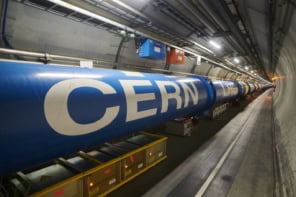
A new report that seeks to map out US priorities in fusion research over the next 10 years has received scathing reviews from American fusion researchers. The report was commissioned by the US Department of Energy (DOE), which asked its Fusion Energy Sciences Advisory Committee (FESAC) to come up with a 10-year plan under several very constrained budget scenarios. According to critics, the report – written by a FESAC subcommittee – lacks vision, does not adequately peer review the proposals that it made, and fails to address the real problems faced by fusion research.
Planning problems
“It seems that the committee was put together to ratify the plan that the DOE had already decided upon,” claims Martin Greenwald of the Plasma Science and Fusion Center at the Massachusetts Institute of Technology (MIT). The report comes in the wake of several years of belt-tightening for the US fusion community, which has suffered from the country’s rising financial contributions to the international ITER fusion project being built in France. Indeed, MIT’s own Alcator C-Mod tokamak device had been earmarked for closure in the 2013 budget and was only saved by Congress following aggressive lobbying by Massachusetts politicians.
The FESAC subcommittee was told to devise a plan that assumes the US remains a member of ITER, with funding ranging from a flat budget to modest growth of about 2% above inflation. Its recommendations involve shifting the emphasis away from plasma science and towards the practical needs of power reactors. It calls for two existing facilities – DIII-D in San Diego and NSTX-U at the Princeton Plasma Physics Laboratory (PPPL) – to be upgraded and for C-Mod to be axed. However, it also envisages two new facilities: a simulator to help understand the interaction of plasma with solid surfaces; and a new reactor called the Fusion Nuclear Science Facility.
Written critiques
The report was scheduled to be approved by the full FESAC at a meeting on 22–23 September but was only circulated the day before the meeting. As a result, another Web conference was scheduled for 10 October. Meanwhile, a number of written critiques were sent to the FESAC, including one signed by 50 senior fusion scientists, and several individual submissions. Critics pointed out that the report did not take into account the views of the community and that its facility proposals were not subjected to peer review. “The committee had too little time for such a weighty charge,” says Stewart Prager, director of the PPPL.
The make up of the committee itself has also come under fire as the DOE stipulated that it should not contain any members from the major fusion labs. Greenwald points out, however, that the committee had an unbalanced representation from the Oak Ridge National Laboratory, which is where the report’s proposed new facilities would be built. At the 10 October FESAC meeting, the DOE also asked its 23 members to abstain from voting if they had a connection with a lab that either has – or may get – a major facility. The remaining members voted to pass the report on to DOE by six votes to three.



